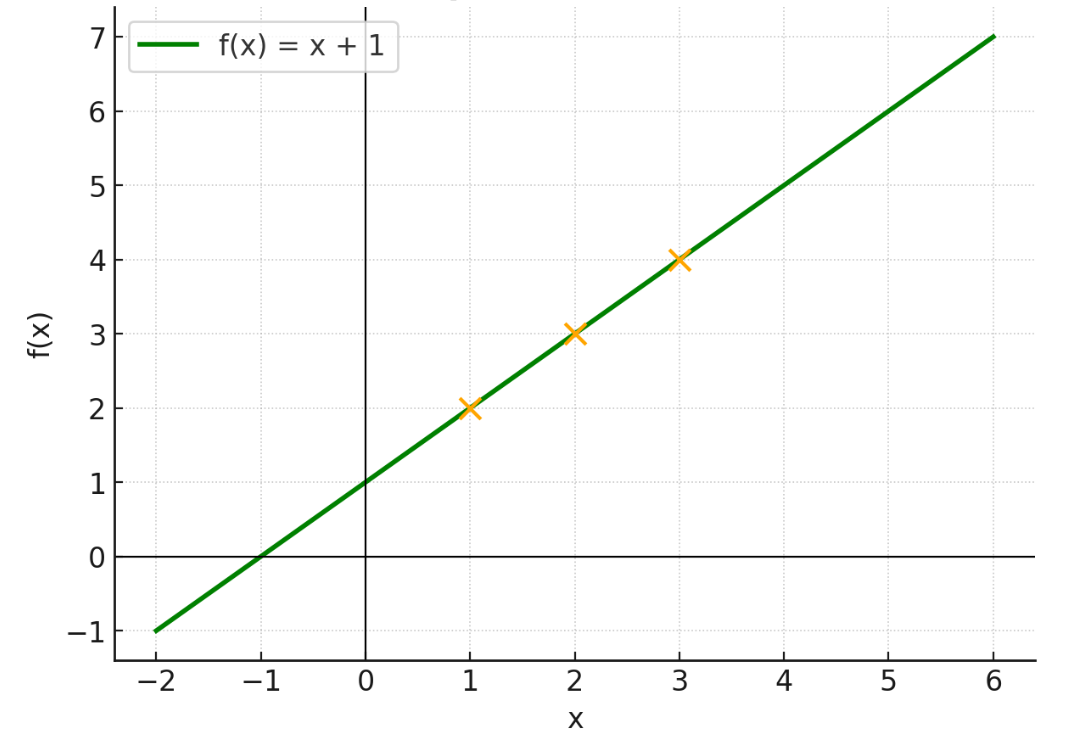Mathematics for AI: Functions

A function is a rule that maps each element from one set—called the domain—to exactly one element in another set, known as the codomain. A set holds a collection of things. For example, here’s a set A that holds three colours:
A = { red, green, blue }
Function Notation
To define a function f from a set A (domain) to a set B (codomain), we write:
Here:
- f is the name of the function
- A is the domain (i.e. the set of inputs the function accepts)
- B is the codomain (i.e. the set of possible outputs)
In simple terms, this notation tells us that the function f takes elements from set A and maps them to elements in set B.
A Worked Example
Let’s say we define a rule:
Take any number and add 1 to it.
That’s our function. Now, apply this rule to some numbers:
- If you start with 1, you get 2
- If you start with 2, you get 3
- If you start with 3, you get 4
Every input gives exactly one output.
We write the function mathematically as:
This means:
- f(x) is the output of the function when the input is x
- The rule is: add 1 to whatever x is
Now, let’s say our input values (i.e. our domain) are:
{ 1, 2, 3 }
Apply the function to each element:
| x | f(x) = x + 1 |
|---|---|
| 1 | f(1) = 1 + 1 = 2 |
| 2 | f(2) = 2 + 1 = 3 |
| 3 | f(3) = 3 + 1 = 4 |
Graph of f(x) = x + 1:
